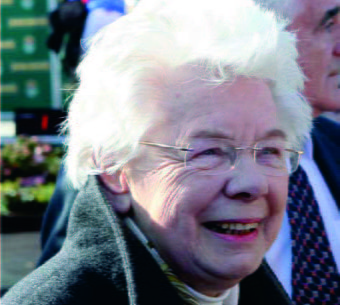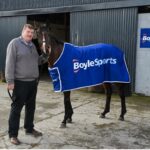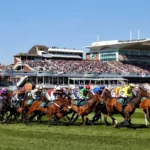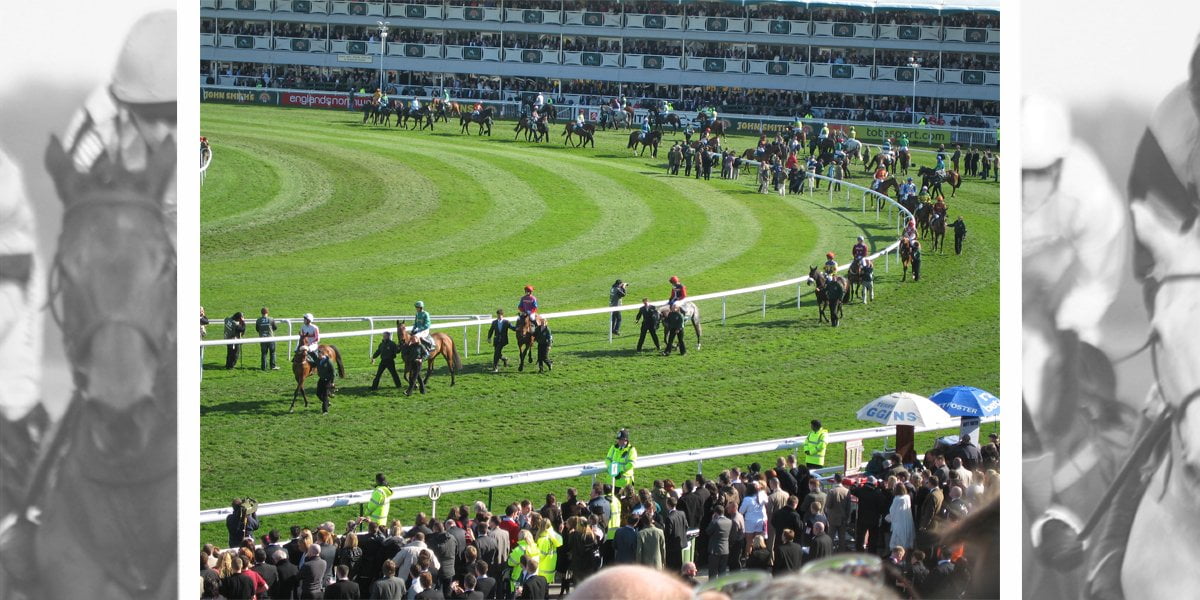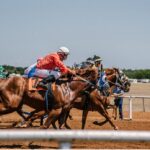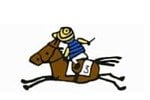Long before women were permitted to become trainers, provided they had enough money, they were able to indulge their passion for the turf in ownership.
Indeed, since the early years of the 20th century some of the most colourful and famous ladies of the turf have been involved with famous winners of the Grand National.
Two lady owners book-ended the runnings before and after the closure of Aintree during the First World War. In 1915 the winner was Ally Sloper owned by Lady Margaret Nelson, who thus became the first registered lady owner. The prize money was £3,515.
In 1919 Poethlyn won carrying the joint-highest weight ever of 12st 7lbs, and ridden by Ernie Piggott, grandfather of the legendary Champion Jockey Lester Piggott. Starting a short-priced favourite, he was owned by Mrs Gwladys Peel; a gift (with a salmon) from her husband Hugh who had bred the horse. This team had also won the substitute National at Gatwick the previous year; his Aintree victory was his ninth in succession.
First lady owner-breeder was Mrs Mary Partridge, owner of Bacton Stud. She raised racehorses with some success, and in 1927 one of her homebreds Sprig won the Grand National – a day long remembered in the area.
In 1929 Gregalach owned by Mrs M A Gemmell won at 100/1, and in 1933 the seven-year-old Kellsboro’ Jack, bought for £1 by Mrs Florence Ambrose Clark from her husband, defied odds of 25/1, famously beating home her husband’s own more fancied runner Chadd’s Fort.
1934 was a vintage year. The awesome Golden Miller, winner of the Cheltenham Gold Cup for five consecutive years between 1932 and 1937, pulled off a feat rarely ever attempted, and never to be equalled, by winning the Aintree spectacular in the same season as his Gold Cup – and in a then record time of 9 mins 20s. He too was only a seven-year-old. Ridden by Gerry Wilson and trained by Basil Briscoe, he was owned by the notoriously eccentric Dorothy Paget, who drove a series of trainers quite mad with her peculiar ways. An heiress of the New York Whitney family, she hated men and often refused to speak to them in person, famously sending her assistant Peggy Whithead to carry irate messages to her trainer Fulke Walwyn in another room. Since he had won for her only five of six races on the card, she advised Peggy to “kick him in the balls”. She would instead ring her trainers in the small hours, since she slept most days and would stay up all night playing cards; unsurprisingly in all she ran through around 17 or 18 trainers. She attended race meetings with two Rolls Royces (the second in case the first broke down), and had a big string of horses on which she would gamble huge sums – her bookmakers too were obliged to accept calls in the middle of the night and staff were employed expressly to sit up to take her bets. Miss Paget also bred horses at her Ballymacoll Stud in Ireland, and the legendary Arkle was foaled there.
1938 saw another famous lady of the turf enter the Aintree Winners’ Enclosure leading her pint-sized Battleship, son of the iconic Man O’War: dubbed the ‘American Pony’, amazingly he stood only 15.1hh and was unfancied at 40/1. He remains the only winner of both the American and the Aintree Grand Nationals; and is also the smallest horse ever to win, and the last entire (he was never gelded). Trained in the UK by Reg Hobbs, he was ridden by surely the tallest jockey ever to win the race, and also the youngest: Bruce Hobbs, son of the trainer, stood 6ft 3 at only 17 years of age. A superlative win indeed! Marion duPont Scott, an heiress of the du Pont [sic] family who was once married to heartthrob Randolph Scott, was a formidable lady. With her brother she founded the Montpelier Steeplechase Hunt Races in the USA, and was a generous funder of all manner of equine enterprises in the breeding centre of Kentucky and around her training centre at Montpelier in Virginia, including the endowment of the Marion duPont Scott Equine Medical Center at Virginia Tech.
The 1950s saw quite a run of the fair sex in the famous Aintree Winners’ Enclosure, yet the most famous of these was never to win the race. Queen Elizabeth The Queen Mother’s first runner was Monaveen in 1950, when she was still Queen Consort; he came 6th.
In 1955 the winner was Quare Times ridden by Pat Taaffe (best remembered as the jockey of Arkle) trained by the peerless Vincent O’Brien and owned by Mrs Cecily Welman. It took courage to send your horse in those days – the fences as they were then were described as ‘merciless’.
It’s as the most unlucky owner however, that The Queen Mother’s near-miss in 1956 with Devon Loch has gone down in the annals of Aintree folklore. Just 50 yards from the line, the ‘certain winner’ belly-flopped to the ground (possibly disturbed by the roars of the crowd or maybe fly-jumping a shadow), handing victory to ESB ridden by Dave Dick, trained by Fred Rimell and owned by Mrs Leonard Carver. A distraught Dick Francis wept as the crowd showed their sympathy; Queen Elizabeth remarked that “That’s racing!” later consoling her horse with “Poor old boy, poor old boy”. Her jockey went on to become a best-selling author of racing thrillers and a very rich man; but the drama and mystery of his inexplicable collapse with Devon Loch has forever stuck to his name.
In the following year 1958 the winner was Sundew ridden by the brilliant Fred Winter, trained by Frank Hudson and owned by Mrs Geofrey Kohn.
The start of the 1960s saw the first televised National and victory for the favourite Merryman II, trained by Neville Crump and owned by Winifred Wallace. He nearly made it a double the following year, just foiled by Nicolaus Silver, only the second grey to win the race. His win was memorable for Sir Peter O’Sullevan, who reminisced on the 50th anniversary of this first TV running: “Two years before, I had been introduced to his owner Winifred Wallace, who wanted advice on how her £200 hunter could become a National winner. I recommended she send him to trainer Neville Crump, who had already won the race twice. The previous December, I had also backed Merryman over a few late-night brandies with bookmaker Jim Bailey – 1,000 to 28 to win and 50 to 10 that he completed the course. He only made one semblance of a mistake throughout.”
Jay Trump an American horse won in 1965; he was owned by Mrs Mary Stephenson and trained in Lambourn along with his amateur rider for the race by Fred Winter (recently retired from riding), who was to give Jenny Pitman so much invaluable advice and support in her early career.
The 1970s were a lean time for lady owners, with only Lucius coming home in front for Mrs Fiona Whitaker, wife of a Scottish accountant. He was trained in Cumbria by Gordon Richards.
In 1985 Last Suspect, owned by Anne Duchess of Westminster won at 50/1 in her colours made so famous by Arkle. He was the third Grand National winner trained by Captain Tim Forster and was known as much for his temperament as his ability. But Aintree can frequently galvanise a ‘thinker’ like Last Suspect and in spite of swishing his tail all the way round he finished with a fine rattle to collar Mr Snugfit, piloted to a memorable victory by Hywel Davies who had almost died in a crashing fall a few months earlier.
1988 and Rhyme ‘n’ Reason won £85,000 for Juliet Reed despite sprawling on landing at Becher’s Brook on the first circuit.
1990 owner Lois Duffy was another American in love with British jump racing. She was already 80 when her Mr Frisk won the race for trainer Kim Bailey and Amateur Marcus Armytage in record time in unseasonably fine weather. Marcus, now a well-known racing journalist, remains the last Amateur rider with a Grand National win.
1992 was election year and the giant 18hh Party Politics won despite a tube in his neck to aid his breathing, landing a massive public gamble. The prize money for the winner had now reached £99,943 and this went to Mrs Patricia Thompson who is more famous as co-owner of Cheveley Park Stud near Newmarket where she and her husband breed high-class Flat horses. The apple of trainer Nick Gaselee’s eye, Party Politics nevertheless retired home to Cheveley. Nick and his late wife Judy opened their Lambourn home as a B&B in their own retirement, which became something of a shrine to the great horse which had provided the peak of Nick’s training career.
In 2010 at Mrs Thompson’s insistence Nina Carberry was given the ride on the grey Character Building, which like their winner, the couple had bought on the eve of the race with another Aintree victory in mind. Finishing 7th, they are on course for another crack this year.
Lady Madeleine Lloyd-Webber, wife of show business magnate Lord Andrew, had a few runners from 1994 and in the early years of this century, including Killusty, Behrajan, Black Humour and Darkness. She has been somewhat unlucky with her National Hunt horses, and also suffered the affront of having a Group 1 win taken from her home-bred star filly Dar Re Mi by the French stewards, in controversial circumstances.
Another famous horse to run in the 1990s was The Fellow, owned by Spanish noblewoman the Marquesa de Moratalla (a close friend of Sir Peter O’Sullevan) and trained in France by Francois Doumen, a great supporter at that period of UK staying races. In 1991 the horse had won the Grand Steeple-Chase de Paris and the King George VI Chase at Kempton. Priced in 1994 at only 8/1 he fell at the 24th fence on his only attempt at Aintree, but he remains the only French-trained winner of the Cheltenham Gold Cup, which he’d taken a month previously, and was twice runner-up by a short head in that race – once to Jenny Pitman’s Garrison Savannah – and also came 4th in 1993. The Fellow died aged 23 at the Marquesa’s Hertfordshire stud.
Millennium year 2000 saw yet another American-owned winner in Papillon, trained by Ted Walsh and ridden by his young son Ruby, now a leading jockey in the UK and his native Ireland. Betty Moran was well-known at home for her top-class Flat-breds, but the Irish are usually ‘in the know’ and the horse’s price collapsed throughout the morning of the race so he started favourite, giving the bookies a memorable thrashing.
2009 saw Mon Mome notch up a memorable ‘double’ since he was the first winner to be both owned and trained by a woman. Mrs Vida Bingham (pictured top, courtesy of Aintree Racecourse), a 76-year-old widow and a former England International Bridge Player, deliberately chose Venetia Williams as her trainer for her sex, feeling she would relate better to another woman. Always a racing fan, she’d only come late to ownership but has now had a few good horses. Whilst hardly daring to hope to win, she did feel Mon Mome – her third staying chaser – was her best to-date and had an excellent chance of being placed. “Everybody was smiling and it was wonderful,” she said after the race. “Winning the Grand National was the absolute peak… that was the most exciting day of my life, bar none.”
In 2017 owners Deborah Thomson and Belinda McClung (The Two Golf Widows) celebrated victory at 14/1 with One For Arthur. Trained by Lucinda Russell and ridden by Derek Fox he became the first Grand National winner to be trained in Scotland since Rustic in 1979. One For Arthur ran again in 2019, coming in 6th place. It looked like he might make another bid for the Grand National in 2020 but with the disruption of Covid-19, the race was cancelled and his chance to challenge another Grand National was gone with it – he was retired in October 2020.
By Sara Waterson
Allison is the Publisher of Eclipse Magazine. She loves going to the Races and is learning to bet (despite being officially the worst bettor in the History of the Universe), there’s a lot more to learn…


